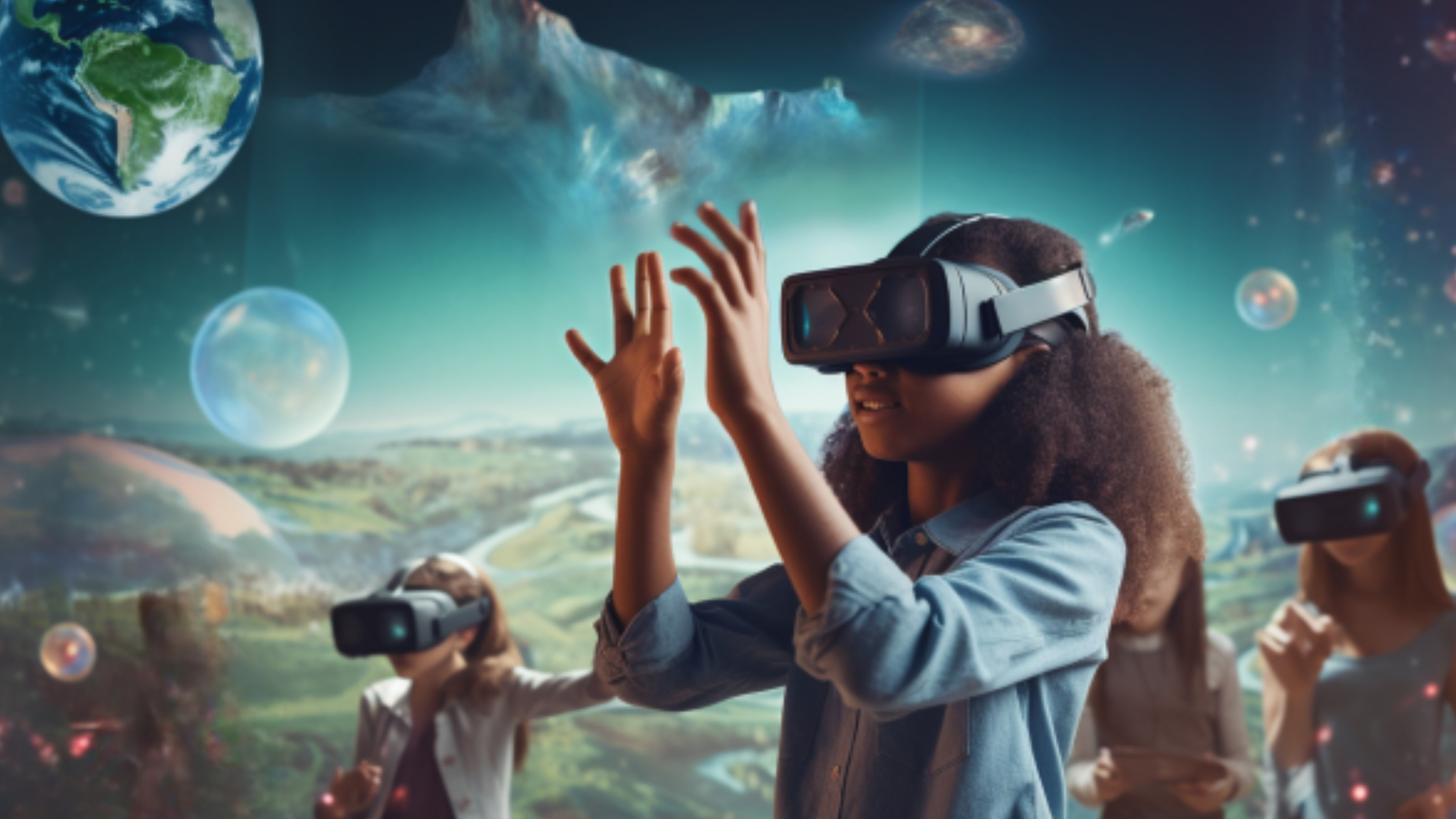
“Tell me and I forget, teach me and I may remember, involve me and I learn.” - Benjamin Franklin
As educators, our mission is to engage and inspire our students, fostering a love for learning that extends beyond the classroom walls. In this ever-evolving digital age, technology has become an invaluable ally in achieving this goal. One such revolutionary tool is Virtual Reality (VR), which offers a gateway to an immersive, interactive, and unforgettable learning experience. By integrating VR into our curriculum, we can unlock new dimensions of knowledge and captivate our students' minds like never before. In this article, we will embark on an enlightening journey on how to build a curriculum with VR and what you'll need to get started.
Step 1: Understanding the Research
"A 3-condition experiment with 286 middle school students, across 18 classrooms and 8 teachers, found that presenting teachers with real-time analytics about student learning, metacognition, and behavior had a positive impact on student learning, compared with both business-as-usual and classroom monitoring support without advanced analytics. This research illustrates the promise of AIED systems that integrate human and machine intelligence to support student learning." [1]
The above-cited study highlights the potential of AI-integrated systems to provide valuable insights to educators in real-time, enabling them to tailor their teaching approaches and support individual student needs effectively. VR and AI will merge as Avatars in the learning environments begin to appear and speak on specific subjects in the experience. We sit on the precipice of a new generation of education.
Virtual Reality is not trend; it's a transformational tool with the power to revolutionize learning. Before embarking on the journey of building a VR-infused curriculum, it is crucial to understand the barriers, steps, and potential of VR within an institutional setting.
1.1 Immersive Learning Experiences: VR can transport students to far-off places, historical events, or even microscopic realms, creating a sense of presence that enhances learning. Imagine standing amidst the Egyptian pyramids or exploring the Amazon rainforest without leaving the classroom – that's the magic of immersive learning.
1.2 Enhanced Concept Comprehension: Complex concepts can be challenging to grasp through traditional methods alone. With VR, students can visualize abstract ideas in 3D, facilitating deeper understanding and improving knowledge retention.
1.3 Safe and Controlled Simulations: VR provides a risk-free environment for students to practice skills and procedures, making it ideal for training in fields like medicine, engineering, and even public speaking.
Building a curriculum with VR is an exciting endeavor, but it requires the right tools, guidance and resources. Let's explore what you'll need to kickstart this immersive learning journey.
2.1 Hardware:
2.2 VR Content and Software:
2.3 Professional Development and Training:
Now that you have the necessary tools and knowledge, it's time to integrate VR into your curriculum effectively.
3.1 Aligning with Learning Objectives: Identify specific learning objectives that VR can enhance or illustrate better than traditional methods. Ensure that the VR experiences align with your curriculum goals and add value to the learning process.
3.2 Variety in VR Content: Offer a diverse range of VR experiences to cater to different learning styles and interests. Whether it's exploring historical landmarks, conducting virtual science experiments, or venturing into outer space, variety enriches the learning journey.
3.3 Collaborative Learning: Encourage collaborative learning experiences by creating group projects or virtual field trips where students interact within the virtual environment. Foster teamwork, communication, and problem-solving skills through VR collaboration.
3.4 Assessment and Feedback: Monitor students' progress and understanding through VR experiences. Utilize built-in analytics or follow-up discussions to gain insights into their learning outcomes and make informed adjustments.
As educators, our paramount concern is the well-being and inclusivity of all students. While integrating VR, it's essential to consider safety and accessibility.
4.1 Health and Safety Guidelines: Ensure that students take breaks during extended VR sessions to prevent discomfort or motion sickness. Prioritize students' well-being above all else.
4.2 Accessibility: Consider students with special needs or physical disabilities when planning VR experiences. Ensure that the content and interactions are accessible to all learners.
With VR as your ally, embark on an immersive learning journey that transcends boundaries and sparks boundless curiosity in your students. Embrace the power of technology to create a learning environment that leaves a lasting impact on their hearts and minds. As you witness the wonder and awe in your students' eyes, you'll know that you've harnessed the true potential of VR in education. So, let's take the leap together into the world of immersive learning with Virtual Reality!
By harnessing the power of VR in education, educators can take a significant leap toward building a curriculum that captivates students' minds and nurtures their thirst for knowledge. As VR becomes more accessible, affordable, and innovative, its potential to revolutionize education will only grow stronger. Let us embrace this transformative technology to create a dynamic, inclusive, and immersive learning environment for the leaders of tomorrow.
"Education is the passport to the future, for tomorrow belongs to those who prepare for it today." - Malcolm X
References:
Created By Euphoria XR | Privacy Policy | VEDX Code of Conduct | Sitemap | Contact Us